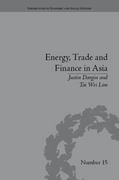Thank you so much.
Trade Analysis Now you will use what you learned to analyze trade potential between the United States and two other countries. Steps: 1. Collect Data Use the chart below to identity one developing country and one developed country to compare to the United States. Use this template to record data for each country and complete the analysis. The chart contains basic data for the United States, two developing countries, and two developed countries, including top agricultural and industrial goods and the worl-cer hours to produce one unit. Note that worl-cer hours to produce one unit is a measure of productivity. The lower the worker hours to produce one unit, the more productive worl-cers are in that country. This may be considered an advantage. United Country A Country B Country C Country D Country States Developing Developing Developed Developed 2 E El 2 4 CDFtH [Worker hours to produce one unit] CITRUS 4 1U it] E 8 [Worker hours to produce one unit] APPAREL 2 4 E 2 2 [Worker hours to produce one unit] CMPUTER SOFTWARE 4 12 8 8 4 [Worker hours to produce one unit] 2. AnalysisUsing the data you collected, answer each of the following analysis questions in well-written paragraphs in your own words. A. Identify an example of absolute advantage relative to the United States from your data tables. Be sure to identity which country has absolute advantage [H.S. or other], the product, and data to support your claim. Tip: When considering absolute and comparative advantage, worI-(er hours to produce one unit is a reflection of productivity. B. Identify an example of comparative advantage relative to the United States from your data tables. Be sure to identity which country has comparative advantage [U.S. or other], the product, and data to support your claim. (3. Explain why most trade occurs because of comparative advantage. Be sure to provide examples from the data tables or from the lesson to support your answer. Now that you are familiar with trade barriers and the reasons they may or may not be used, it is time to evaluate a trade issue for yourself. You will read and analyze two images related to trade. Then you will tal-ce a stand on the issue. Use this template to organize your responses. Steps: 1. Choose two different visual media items that express opinions about trade agreements, barriers to trade or free trade. The resource list provides some examples of visual media and guidance on where to locate them on the Internet. Be sure to include the media item, or directions on how to aooess it, with your assessment. Make a note of the key events and ideas evident in the item, the creator and date of origin, and be sure to read any captions or quotes that are included. 2. Analyze the message delivered by each of your visual media items. For each item, respond to the following questions in complete sentences. Cite evidence from the resource and the lesson to justify your responses. A. What is the issue discussed in the visual media item you chose? B. What is the creator's viewpoint on the issue? What details in the resource support the author's claim? Provide evidence from the item to support your response. (1. Does this viewpoint reflect a commitment to free trade or to protectionism? Explain your answer and include evidence from the item to support your response. D. Do you agree or disagree with the viewpoint of the item you chose? Why or why not? 3. Respond to the following reflection questions based on your understanding of free trade and protectionism. A. What are two benefits and two costs of free trade? B. What is protectionism and why would a country base trade policy on it"?I Explain at least two reasons










